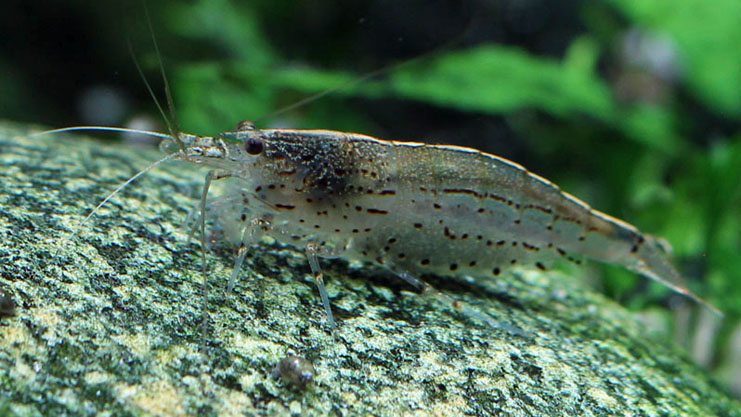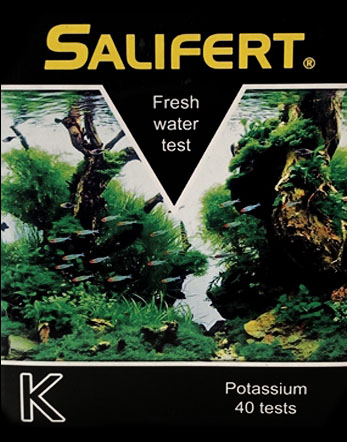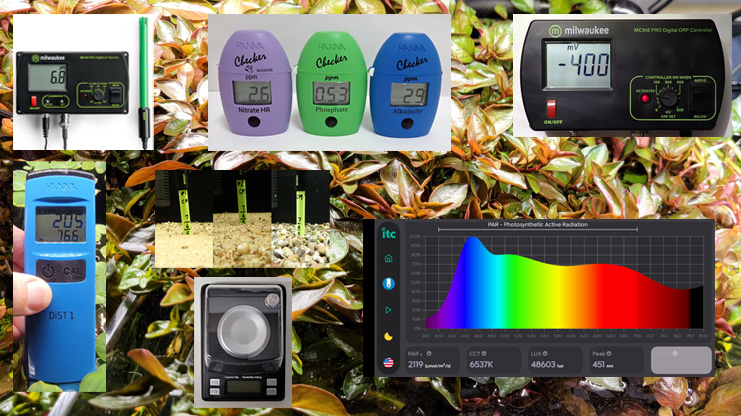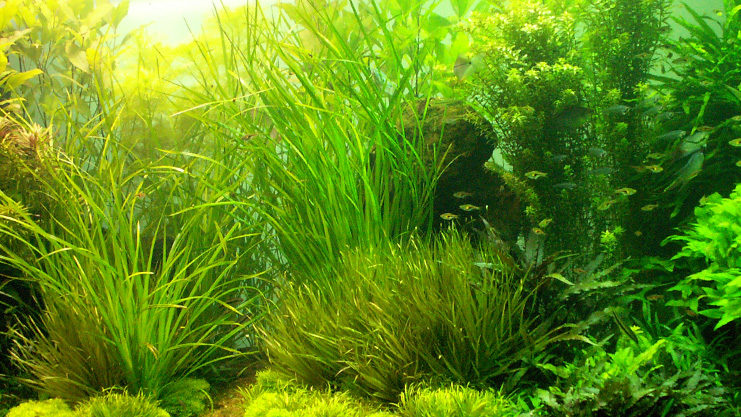From the Aquarium Lab
Potassium Toxicity in Freshwater Shrimp

By Tony Griffitts
Published - 20241223, Revised:
Freshwater shrimp are often kept by hobbyists in planted aquariums. Shrimp hobbyists often question the safety of aquatic plant fertilizers marketed by aquarium industry manufacturers. This article exposes a possible concern with using potassium (K) fertilizers with systems containing shrimp.
The toxicity of elements in freshwater aquatic systems varies depending on species of animals and water chemistry. Systems with higher chloride levels often raise the mg/L (milligrams per liter) point for which an element becomes toxic. Low chloride levels in freshwater make many elements toxic at low concentrations. The ratio of elements in freshwater can also cause toxic conditions.
A search for scientific studies (Google Scholar) on potassium in freshwater shrimp revealed that the area lacks research. Documentation on the toxicity of potassium to freshwater shrimp is minimal. Most information available from the aquarium industry only covers an effective range of potassium for aquatic plants and ignores the toxic level for animals:
- Per Salifert[1], “Potassium concentration in freshwater should typically be 5 - 30 mg/L (= ppm).
- Per Aquarium co-op[2], “In general, an excess of potassium in planted tanks does not cause algae growth, and experienced aquatic horticulturists have dosed up to 100 ppm potassium in high tech planted aquariums without experiencing any toxicity issues.”
- Per Arka Biotechnologie[3], “The optimal potassium level in a freshwater aquarium is 5 - 10 mg/L. To effectively prevent a potassium deficiency, use our potassium fertilizer Plants K.”
- Per Aquatrition[4], “Under ideal circumstances, in order to maintain a healthy, vibrant, and thriving planted aquarium, it is recommended to maintain potassium concentrations within a range of 10 to 40 mg/L.”
- Per JBL[5], “For a good plant growth the value should approximately be between 5 and 10 mg/l, for aquariums with high power light from about 1 W/l illuminance between 10 and 20 mg/l.”

Some initial experiments with potassium (K) in the aquarium lab were done in systems with ram cichlids (Mikrogeophagus ramirezi) and Amano shrimp (Caridina multidentata). The experiment aimed to record a minimum effective level for aquatic plants.
It was observed that 30 ppm of potassium (measured with a Salifert Freshwater Potassium kit) killed two of three Amano shrimp within 48 hours. The third and last Amano shrimp died five days after dosing potassium chloride (KCl) to increase the potassium level from < 5 ppm to 30 ppm. The ram cichlids showed no adverse reaction to 30 ppm of potassium.
Water Chemistry
- GH = 36 ppm (Hanna “Total Hardness LR” [HI735])
- KH = 50 ppm (Hanna Freshwater Alkalinity [HI775])
- TDS = 78 ppm (Hanna TDS Meter)
The 100% lethal concentration of 30 ppm potassium in freshwater shrimp was unexpected. While the observation is far from conclusive science, further experimental research is warranted to validate it.
1. Salifert, https://www.facebook.com/Salifert/, Freshwater Potassium Instructions,
http://www.aquaworldaquarium.com/edu/Salifert_FW_PotassiumTestInstructions.pdf
2. Aquarium co-op, When Should I Dose Potassium in My Planted Aquarium?, How Often Should I add Potassium to My Aquarium?,
https://www.aquariumcoop.com/blogs/aquarium/potassium-fertilizer#:~:text=If%20you%20aren't%20sure,without%20experiencing%20any%20toxicity%20issues.&text=Why%20doesn't%20Easy%20Green,give%20Easy%20Potassium%20a%20try
3. ARKA Biotechnologie, Optimal plant growth - Deficiency symptoms in aquarium plants,
https://www.arka-biotech.de/en/guide/solving-problems-in-the-aquarium/optimal-plant-growth#:~:text=The%20optimal%20potassium%20level%20in,and%20supports%20lush%20plant%20growth.
4. Aquatrition, Identifying Potassium Deficiency,
https://www.aquatrition.in/potassium-the-needed-planted-aquarium-nutrient/?srsltid=AfmBOorA7bI8dLEM7_jT8eT5OnkoJGKc_PeaKb3dxXYoN5iL4t32H9N-
5. JBL, Water values for water plants in detail
https://www.jbl.de/en/blog/detail/134?country=us



